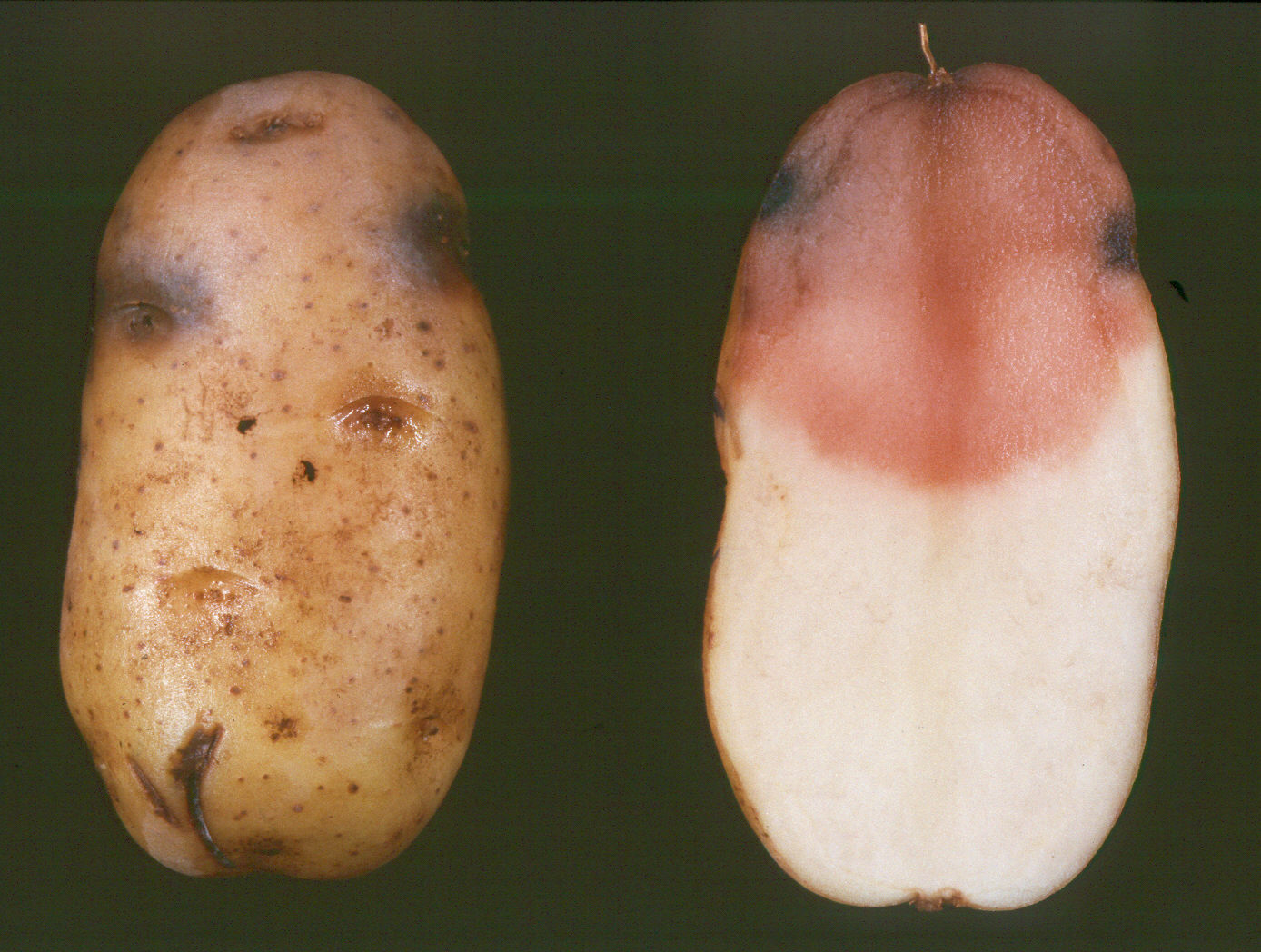
05 Aug Agronomy Update – August 5th
Hi everyone,
Another week of variable weather in PEI. On Monday, Eastern PEI got a fair bit of rain (15-20 mm) while West Prince generally got less than 5 mm. Rain is in the forecast for today and tomorrow, though this time, the forecast is for more rain in the west…so maybe the week will balance out!
From my own field visits and chats with growers as well as the report from the Scouting Meeting on Tuesday, it sounds like most folks are very happy with the progress of the potato crop. Canopies are healthy, tubers per plant are up, and growth appears to be around 10 days ahead of schedule. More on the Scouting Meeting recap below.
Thinking Ahead to Potential Storage Issues:
In my travels, I’ve seen some fields with significant yellowing of plants in some low areas of fields. Many of these areas had standing water above the top of the row for more than 24 hours, which will likely result in some water-logged tubers with higher potential for soft rot and disease.
If you have some fields with low spots that had standing water for a considerable length of time and are showing signs of stress in the plants, it would be worth flagging some of these areas now. If the rest of the growing season goes well, there is a good chance that yields will be above average and that storages will be a lot more full than last year. Don’t put those good quality potatoes at risk by digging those low spots and putting those potatoes in with the rest of your crop. You may regret that decision rather quickly this fall and winter!
It’s definitely not too early to flag those spots now and make a plan for dealing with them. If they are small, do you dig them at all? If they are larger or less severely affected, dig them separately and move those potatoes to temporary storage or ship directly from the field (if possible). If you are a contract grower, talk with your customer sooner rather than later to come up with a plan for those acres and to determine if you need to find a different storage location.
Also, I’ve been talking with some growers who are thinking about pink rot. Pink rot (caused by the fungus Phytophthora erythroseptica) can enter potatoes through enlarged lenticels during times of excessive soil moisture. It can spread pretty quickly under wet conditions, but there are some effective tools to help control it. Research by Bennett Crane and Rick Peters at AAFC has previously estimated that about 40% of strains tested in PEI showed some level of resistance to Ridomil (metalaxyl-m).
For prevention of pink rot spread in the field, local studies have shown that phosphorus acid products (Confine, Phostrol, Rampart) as well as Orondis to be effective alternatives to Ridomil if worried about resistance. Phosphorus acid products generally need to be applied at between 7-10 L/acre spaced over 3-4 applications for effective control. With the health of the canopy this year, there should be less concern about leaf burn from these products. There is also the option to apply phosphorus acid as a post-harvest treatment going into storage. Note: Stadium is not labelled for control of pink rot.
Spore Trapping Update:
Spornado Results for Monday, August 2nd: All sites negative for Late Blight
Airspore Results for Monday, August 2nd: All sites negative for Late Blight
Airspore Results for Alternaria/Bortrytis (August 2nd)
| Location | Early Blight (A. solani) |
Brown Spot (A. alternata) |
Bortrytis cinerea |
| West Prince (ave of 6 sites) | 4 | 3 | 15 |
| East Prince (ave of 4 sites) | 11 | 3 | 28 |
| Queens (ave of 4 sites) | 6 | 0 | 22 |
| Morell/St Peters (1 site) | 22 | 0 | 62 |
| Eastern Kings (4 sites) | 6 | 0 | 26 |
Good news that we still aren’t finding any late blight spores. There also haven’t been reports of late blight in NB or Maine this season.
As for Alternaria…spore numbers are still pretty low, which isn’t surprising given the cooler, wet weather we’ve had recently. Brown spot spores have been quite low all season and I haven’t heard many growers report finding foliar symptoms of Brown Spot. There are some grey mould (Bortrytis) spores kicking around, so growers should continue to monitor for any symptoms, especially with dense canopies. If using Bravo/Echo (chlorothalonil) later in the season, that usually will keep grey mould under control.
SpudChat: Scouting Review #3
In this week’s episode of SpudChat, Lorraine MacKinnon and I review what we heard at the most recent Scouting Meeting held on Tuesday, August 3rd. You can listen to the episode at https://spudchat.buzzsprout.com/ or wherever you download your podcasts.
Just a heads-up to growers that I’ll be on vacation next week. If you need something urgent or trial related, please feel free to contact Morgan (morgan@peipotato.org). We will pass along spore trapping results next week after they come back.
Cheers
Ryan
